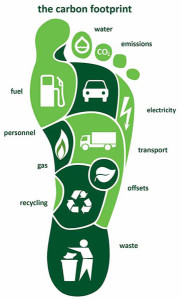Most everyone is familiar with the story of the Sorcerer’s Apprentice through Disney’s retelling of Goethe’s 1747 poem. The apprentice, weary of sweeping the floor and fetching pails of water, makes use of the absence of his master to put on the sorcerer’s hat and animate the broom so it can fetch the water for him. But when the bath is full, the apprentice does not know how to stop the broom, so that the bath overflows. In despair the apprentice takes an axe to the broom, but new brooms and pails arise from the splinters, pouring out water and flooded the house. Things look dire – but then the sorcerer, alerted by the racket, returns and cleans up the mess with one wave of his magic wand.
Much like the sorcerer’s apprentice, we have started something a few centuries ago that we do not know how to stop, flooding our house, our planet, with carbon dioxide. We look to science as the sorcerer who will eventually break the spell, but science is not magic. It cannot make the consequences of our actions disappear into thin air like the sorcerer did the water.
We’re going to have to deal with it without a magic wand and science can only help us to find the ways to do so.
The international accord reached in Paris in December to hold global warming down to 2% above pre-industrial levels is a big step forward in addressing this huge problem on the level of nations, but it is not clear as yet how the implementation of the accord is going to reduce the carbon foot print of individual citizens. While that is in the works, there is a lot we can do to regulate ourselves.
 Your carbon footprint is the annual amount of CO2 released in the atmosphere on your account, either directly by such things as heating your house, driving your car, or even breathing, or indirectly, by the emissions of the power plants generating the electricity you use, of the factories and farms producing the items
Your carbon footprint is the annual amount of CO2 released in the atmosphere on your account, either directly by such things as heating your house, driving your car, or even breathing, or indirectly, by the emissions of the power plants generating the electricity you use, of the factories and farms producing the items
you buy, and of the vehicles transporting them to you.
The carbon footprint of the average American is nearly 20 tonnes a year. Although China overtook the United States in 2007 in total emissions by country because of its rapid industrialization, the average carbon footprint per person there is only a little over 4 tonnes a year. It is not quite conceivable that we Americans will adopt a Chinese life style, but surely we can shed a few thousand pounds here and there.
We can drive more economically and make sure that the car is in good repair. We can weatherproof the house and swap out our old monster of a fridge for a more energy-efficient modern one. We can eat less meat, because meat production does not only generate a lot of CO2, but also a lot of methane, the ‘other’ – and more pernicious – greenhouse gas. Methane is also produced by organic matter in landfills, so throwing out less food is also helpful. We can buy locally grown food, reducing the emissions generated by transportation. We can plant tre
es, which absorb CO2.
After taking care of all that, we can even further reduce our carbon footprint by buying so-called carbon offsets at $10 per tonne. The proceeds of these carbon offsets go to CO2-reducing programs like forest restoration and updating manufacturing plants and power plants.
There are numerous websites providing detailed information on how to go about all this, such as carbonfund.org and TEP’s website at tep.com.
There are also many online carbon footprint calculators carbon, for instance the site of the Nature Conservancy.

